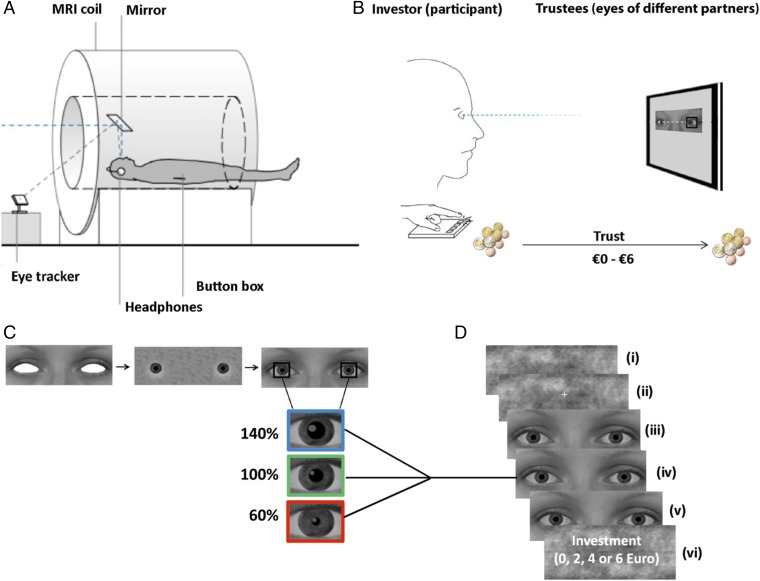Fig. 1.
Experimental set-up, stimuli, and task. (A) Inside the MRI scanner, the participants played one-player trust-games while their investment-decisions and pupil diameter were measured with a button box and eye-tracker, respectively. (B) Subjects (investors) watched short video clips showing the eye region of different virtual partners (trustees) whose pupils were manipulated to change in size. In each trial, subjects were asked to transfer between €0 and €6 to their partner. Investments were then tripled and the virtual trustee was asked to transfer between 0% and 100% of the tripled amount back to the investor. No feedback was provided so that subject’s investments (indicating trust) were based on information from the partner’s eye region only. (C) The stimulus material consisted of 18 photos with neutral expressions (nine males). The eyes were then filled with eye whites and irises, and an artificial pupil was added. The partner’s pupil dilated (140% of the original diameter), constricted (60%), or remained static (range of 3–7 mm). (D) Stimuli presentation. (i) A Fourierscrambled image was presented for 4,000 ms; (ii) fixation followed for 500 ms; (iii) the eye stimulus remained static for the first 1,500 ms; then (iv) in the dilation and constriction conditions, the pupils gradually changed in size over 1,500 ms; and (v) remained static at that size during the final 1,000 ms (in the static condition, pupils remained at the same size throughout the trial). (vi) A screen appeared asking participants to make an investment decision.

